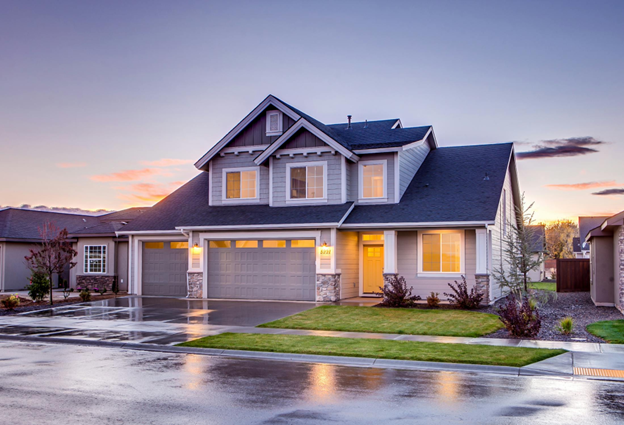Your roof is one of the most crucial components of your home, protecting you and your belongings from the elements. However, it’s often overlooked until a problem arises. Regular maintenance and inspections can extend the lifespan of your roof and prevent costly repairs down the line. Here are some roofing care tips and inspections you should know about to keep your roof in optimal condition.
Regular Cleaning and Debris Removal
Over time, debris such as leaves, branches, and dirt can accumulate on your roof, leading to potential damage. Regularly cleaning your roof and gutters with the help of roofing experts at roofomega.com helps prevent water pooling and moisture buildup, which can weaken your roof’s structure and lead to leaks. Use a soft-bristled brush or a leaf blower to remove debris, taking care not to damage the roofing material.
Inspecting for Signs of Damage
Conducting visual inspections of your roof at least twice a year can help identify potential issues early on. Look for signs of damage such as missing or damaged shingles, cracked caulking, or rust on metal roofs. Pay attention to areas around chimneys, vents, and skylights, as they are common entry points for water leaks. If you notice any signs of damage, it’s essential to address them promptly to prevent further deterioration.
Checking Shingles and Roofing Material
Start by examining the condition of your shingles or roofing material. Look for any missing, cracked, or damaged shingles, as well as signs of curling or warping. Pay attention to areas where the roofing material may be lifting or separating from the roof deck, as this can indicate underlying issues with the roof’s integrity. Addressing damaged shingles promptly can help prevent water infiltration and extend the lifespan of your roof.
Inspecting Flashing and Sealants
Check for signs of corrosion, deterioration, or gaps in the flashing or sealant that could compromise the waterproofing of these areas. Damaged flashing or sealant can allow water to penetrate your roof and cause leaks, so it’s essential to repair or replace any compromised components as needed.
Checking for Leaks
Water leaks can cause significant damage to your home’s interior and structure if left unchecked. Regularly inspect your attic for signs of water stains, mold, or mildew, as these indicate a potential roof leak. Additionally, check ceilings and walls for water spots or discoloration. If you notice any signs of a leak, contact a professional roofer to identify and repair the source of the problem.
Inspecting Flashing and Seals
Start by examining the flashing around chimneys, vents, and skylights, as well as the seals around roof penetrations such as plumbing vents and exhaust fans. Look for any signs of deterioration, gaps, or damage that could compromise the waterproofing of these areas. Damaged flashing or seals can allow water to seep into your home, leading to leaks and water damage over time.
Examining Roof Valleys and Slopes
Roof valleys and slopes are particularly vulnerable to leaks due to the concentration of water runoff in these areas. Inspect the valleys and slopes of your roof for any signs of wear, damage, or deterioration in the roofing material. Pay close attention to areas where shingles may be missing, cracked, or broken, as these can create openings for water to penetrate your roof and cause leaks.
Checking Attic Ventilation and Insulation
Poor attic ventilation and insulation can contribute to condensation buildup and moisture problems, leading to roof leaks and other issues. Ensure that your attic is adequately ventilated to allow for proper airflow and moisture control.
Additionally, check the insulation in your attic for any signs of water damage or compression, as this can indicate leaks or moisture intrusion from the roof above. Addressing any ventilation or insulation issues can help prevent leaks and prolong the life of your roof.
Trimming Overhanging Branches
Overhanging branches can pose a threat to your roof, especially during storms or high winds. Trim back any branches that hang over your roof to prevent them from scratching or damaging the roofing material. This also helps reduce the buildup of debris and prevents animals from accessing your roof, reducing the risk of damage.
Professional Inspections and Maintenance
While regular maintenance can help prevent many roofing issues, it’s essential to have your roof professionally inspected at least once a year. A professional roofer can identify potential problems that may not be visible to the untrained eye and recommend necessary repairs or maintenance. Additionally, consider scheduling professional maintenance such as roof cleaning, sealing, or recaulking to keep your roof in top condition.

Taking care of your roof is essential to ensure the longevity and structural integrity of your home. By following these maintenance and inspection tips, you can identify potential issues early on and prevent costly repairs in the future. Remember to clean your roof regularly, inspect for signs of damage, check for leaks, trim overhanging branches, and schedule professional inspections and maintenance as needed. Your roof works hard to protect you and your home, so it’s essential to give it the care and attention it deserves.

Recent Comments